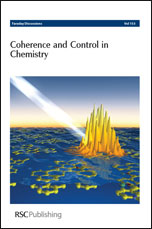Controlled redistribution of vibrational population by few-cycle strong-field laser pulses
Abstract
The use of strong-field (i.e. intensities in excess of 1013 Wcm−2) few-cycle ultrafast (durations of 10 femtoseconds or less) laser pulses to create, manipulate and image vibrational wavepackets is investigated. Quasi-classical modelling of the initial superposition through tunnel ionization, wavepacket modification by nonadiabatically altering the nuclear environment via the transition dipole and the Stark effect, and measuring the control outcome by fragmenting the molecule is detailed. The influence of the laser intensity on strong-field ultrafast wavepacket control is discussed in detail: by modifying the distribution of laser intensities imaged, we show that focal conditions can be created that give preference to this three-pulse technique above processes induced by the pulses alone. An experimental demonstration is presented, and the nuclear dynamics inferred by the quasi-classical model discussed. Finally, we present the results of a systematic investigation of a dual-control pulse scheme, indicating that single vibrational states should be observable with high fidelity, and the populated state defined by varying the arrival time of the two control pulses. The relevance of such strong-field coherent control methods to the manipulation of electron localization and attosecond science is discussed.
- This article is part of the themed collection: Coherence and Control in Chemistry

 Please wait while we load your content...
Please wait while we load your content...